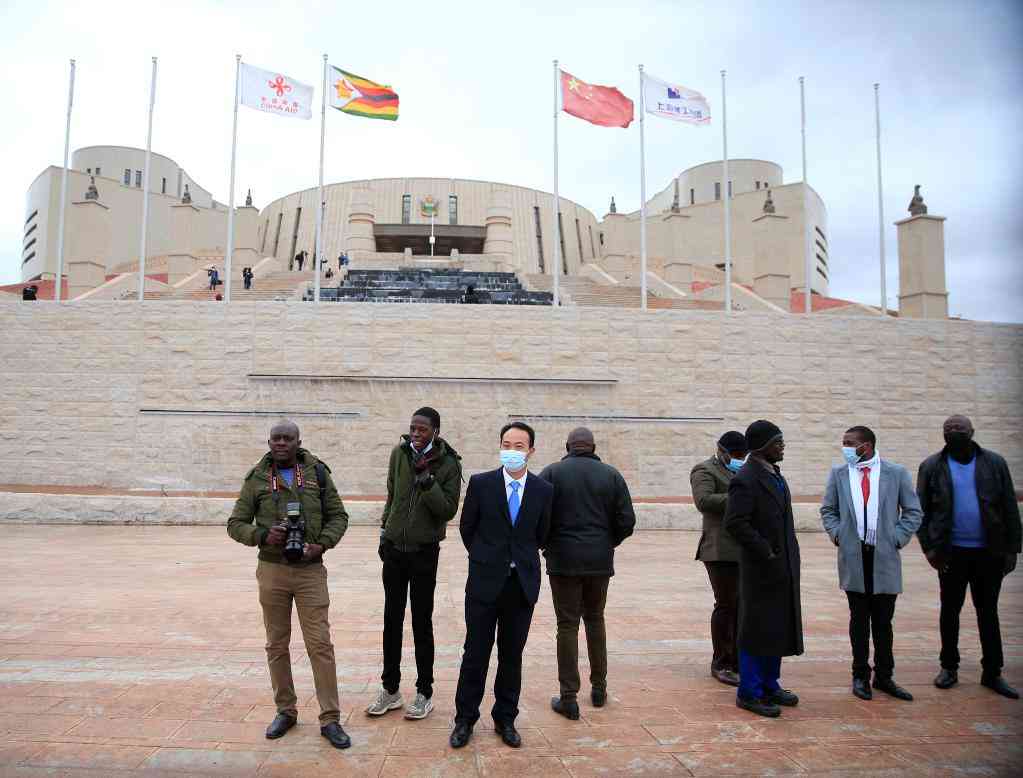
In their efforts to influence the attitudes and perceptions of publics in foreign countries regarding their domestic and foreign policies, global powers normally deploy what is called soft power. Popularized by Joseph Nye, the concept of soft power utilizes persuasion and attraction to improve perception.
This means soft power should be differentiated from the conventional hard power which uses force of arms, threats, sanctions, and other forms of coercive diplomacy. Soft power is thus majorly a public diplomacy tool used in global branding and image building by states.
In Zimbabwe, China has initiated a number of activities as part of its soft power projection. This article looks at two. One of the major Chinese soft power instruments in Zimbabwe is the Confucius Institute at the University of Zimbabwe.
The Institute which opened its doors in 2006 trains Zimbabweans in Chinese language and culture- which falls into the category of cultural diplomacy.
In view of the increased Chinese investments in different sectors in Zimbabwe, the need for a workforce with a working knowledge of the Chinese language has become imperative.
This may reduce the perennial labour disputes reported in Chinese-run firms, mainly resulting from language or communication problems.
Additionally, employment opportunities are being created for interpreters. Students who are migrating to China for studies may also benefit from some of the courses taught. By 2019, the Institute had 3000 graduates, 50 of whom had Masters Degrees and 3 had doctorates.
However, the picture is not as rosy. This is initiative comes as part of
- Mavhunga puts DeMbare into Chibuku quarterfinals
- Bulls to charge into Zimbabwe gold stocks
- Ndiraya concerned as goals dry up
- Letters: How solar power is transforming African farms
Keep Reading
China’s crusade to penetrate Zimbabwe’s economic, social, and political sectors through benevolent domination tactics. The teaching of Chinese language and culture in Zimbabwe is in the same class as the teaching of English language and culture during the colonial era.
The only difference is that the Chinese strategy is noncoercive in nature. It is an attempt to use language and culture as a weapon of soft domination. The Chinese themselves are not willing to learn local languages such as Shona and Ndebele yet they are becoming more visible in Zimbabwe’s rural communities where mining and other activities are taking place.
This explains why numbers of labour disputes and investor-local community relations continue to rise. There is little interaction between Zimbabweans and the local Chinese migrant community mainly resulting from this resistance to learn local languages and cultures.
They are a secluded community. Thus, instead of only teaching Chinese language and culture to Zimbabweans, there should be concerted efforts to ensure that Chinese managers, supervisors and other officers enrol at the same institute to learn local languages as part of their orientation and induction into the Zimbabwean business environment.
This would also help in community engagements and negotiations with chiefs, headman and ordinary villagers.
China has also used grants as part of its soft power strategy in Zimbabwe. Perhaps one of the biggest grants was the $200 million for the construction of the parliament house in Mt Hampden.
I have questioned the wisdom for these kinds of grants in Africa especially considering the fact that the parliament buildings are symbolic of the independence and sovereignty of every state.
Thus, the construction of such an important project should not be contracted to outsiders.
The Chinese make sure that for every grant they give, they become the main contractors of the project. This also means the use of mainly Chinese material and equipment since sub contractors are also mainly Chinese.
I would not want to believe that Zimbabwe or any other African country do not have resources to build their own parliament houses, and neither do the lack the expertise to build such structures since there are a number of local construction companies and engineers to do that kind of work.
Besides the parliament house donation, Zimbabwe has also received $30 million for the construction of the Agricultural Technology Demonstration Centre at Gwebi College.
China also provided varying amounts of support and equipment to assist Zimbabwe in dealing with the COVID-19 pandemic as well cyclone Idai and the 2008 cholera outbreak.
A few years ago, the National Sports Stadium was renovated through a Chinese grant of around $10 million. In December 2023, Zimbabwe also received military equipment work $28 million as a donation.
While these donations were extended on the basis of benevolence, we must never forget that they are a small part of a Chinese strategy to gain the favour of Zimbabwe government elites as well as for the Zimbabwean public to have a positive perception about its policies.
However, while this strategy has worked with government elites and politicians, it has proven fruitless with the ordinary citizens in view of a number of infractions such as environmental damage and labour violations and associated ills.
While these kinds of ‘assistance’ are appreciated, we should be careful that they are not used as instruments of penetration, control, and domination. An independent country must always exert some sort of agency to protect its sovereignty, freedom, and independence even in interactions with its so-called all-weather friends.
- Dr Chipaike is a research fellow with the Public Policy and Research Institute of Zimbabwe. He is also an international relations lecturer at Bindura University of Science Education. These weekly New Perspectives articles, published in the Zimbabwe Independent, are coordinated by Lovemore Kadenge, an independent consultant, managing consultant of Zawale Consultants (Pvt) Ltd, past president of the Zimbabwe Economics Society and past president of the Chartered Governance & Accountancy Institute in Zimbabwe (CGI Zimbabwe). — kadenge.zes@gmail.com or mobile: +263 772 382 852.






